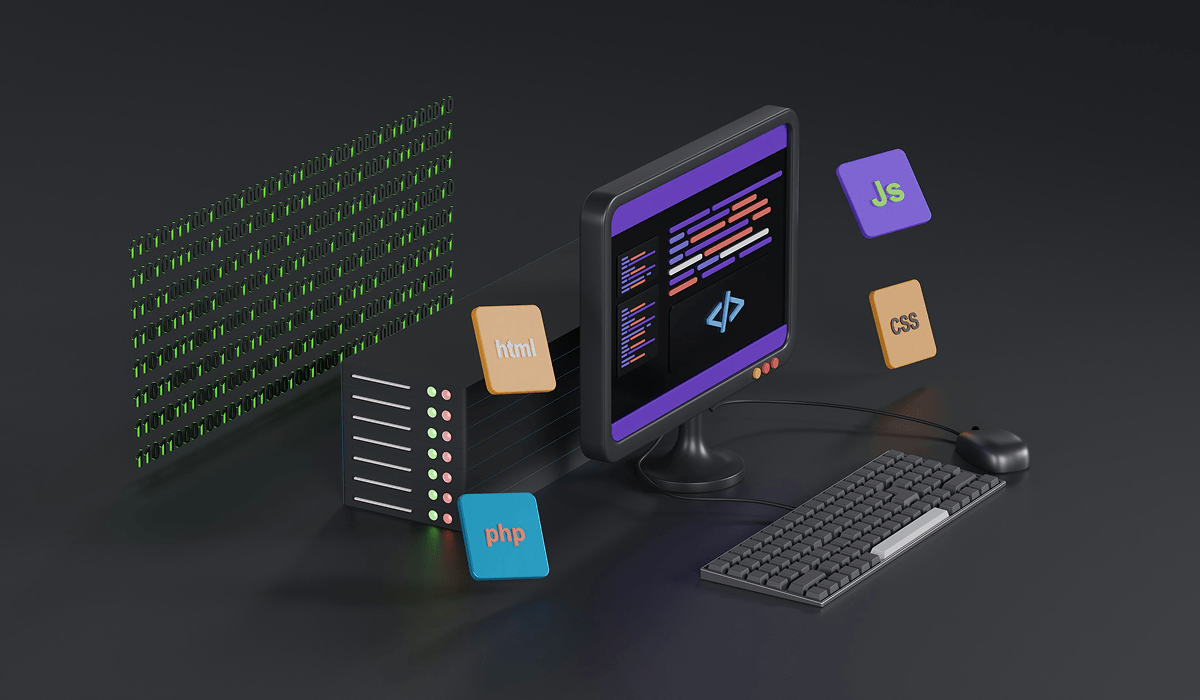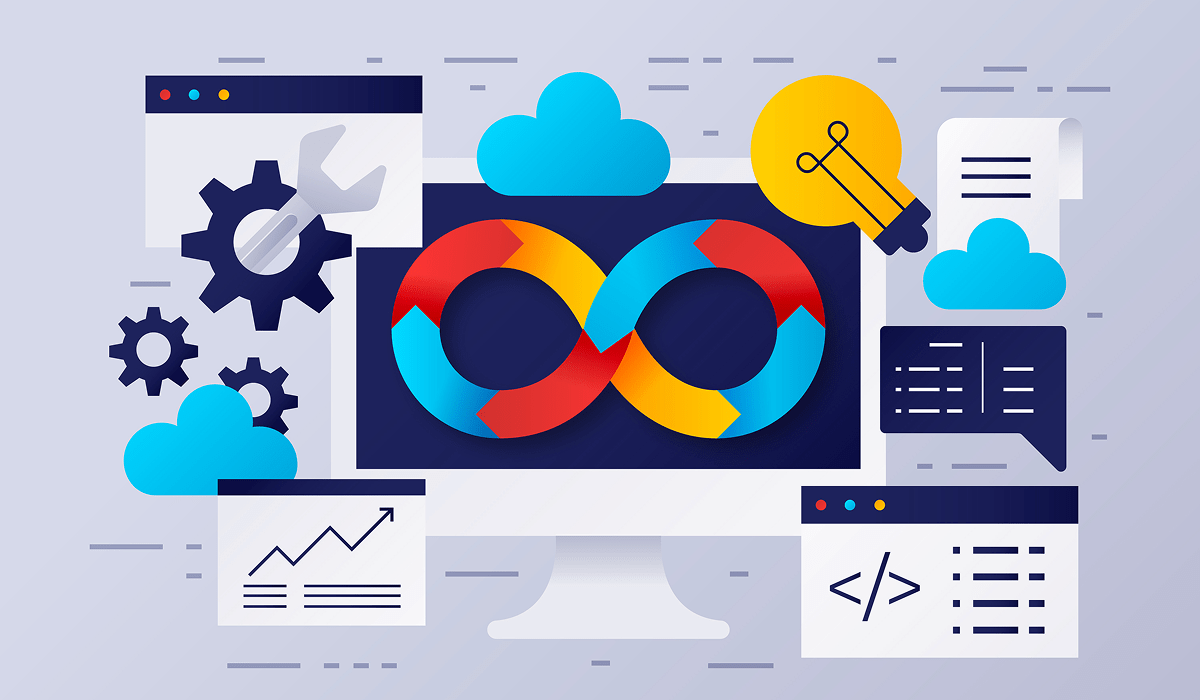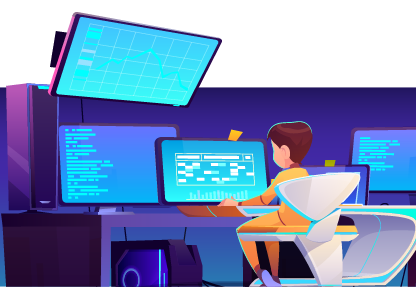.
Why Rust Programming Matters for Your Child's Future
The technology landscape shifts rapidly, and Rust programming has emerged as one of the most significant developments in software engineering. At CODDY, we’ve seen increasing interest from parents asking whether Rust should be part of their child’s coding journey. Our experts believe Rust can be a great next step for teenagers who already have a strong foundation in Python or JavaScript.

Parents are increasingly interested in modern IT skills and languages such as Rust.
Rust programming language addresses fundamental safety issues that have plagued software development for decades. Major technology companies are rapidly adopting Rust for critical systems, creating unprecedented demand for skilled developers.
Parents planning their children's technology education need to understand which skills will remain valuable over the next decade. Rust's unique position in the programming ecosystem makes it worth considering for older teenagers with serious coding interests.
Understanding Rust Programming Language Origins

The stages of development of the Rust language - from a Mozilla Research project to industry recognition.
Rust programming language was conceived in 2010 at Mozilla Research by Graydon Hoare. The project aimed to solve memory safety issues while maintaining the performance characteristics needed for system-level programming.
The language spent five years in development before reaching stability in 2015. During this period, Mozilla invested heavily in creating a programming language that could eliminate entire categories of bugs that commonly plague C and C++ applications.
Since achieving stability, Rust has gained momentum across the technology industry.
What Is Rust Used For in Modern Software Development

Rust is used in systems programming, web development, and blockchain technologies.
What is Rust used for spans multiple domains where performance and reliability are critical. The language excels in areas where traditional approaches involve trade-offs between speed and safety.
System programming represents Rust's primary strength. Microsoft has rewritten significant portions of Windows in Rust, resulting in measurable improvements in security and stability. The company reports that memory-related security vulnerabilities have decreased by over 70% in components converted to Rust.
Web development increasingly leverages Rust for backend services. Discord famously migrated their message handling system from Go to Rust, achieving a 10x performance improvement while reducing resource consumption. Companies like Dropbox and Figma have reported similar benefits after adopting Rust for critical infrastructure components.
Blockchain and cryptocurrency development has embraced Rust as a preferred language. The Solana blockchain, built primarily in Rust, processes thousands of transactions per second while maintaining decentralization. This performance advantage has led many new blockchain projects to choose Rust over alternatives.
Cloud infrastructure and DevOps tools increasingly rely on Rust. Popular tools like Firecracker (Amazon's microVM technology) and Deno (a modern JavaScript runtime) are built with Rust, demonstrating its suitability for cloud-native applications.
Comparing Rust to Other Programming Languages

Most new blockchain projects choose Rust.
Parents often ask how Rust compares to languages their children might already know or consider learning. Each language serves different purposes and offers distinct advantages.
Python remains an excellent choice for beginners and data science applications. Its simple syntax and extensive libraries make it ideal for learning programming concepts. However, Python's interpreted nature limits performance in computationally intensive applications where Rust excels.
JavaScript dominates web development and offers immediate visual feedback that motivates young learners. Modern JavaScript frameworks enable rapid application development, making it valuable for entrepreneurial students. Rust complements JavaScript by providing high-performance backend services for web applications.
Java and C++ represent traditional choices for computer science education. Java's object-oriented design teaches important software engineering concepts, while C++ provides low-level system understanding. Rust offers memory safety advantages over C++ while maintaining similar performance characteristics.
The choice between languages depends largely on a student's interests and career goals. Web development favors JavaScript, data science emphasizes Python, and system programming increasingly prefers Rust over traditional alternatives.
Career Prospects for Rust Programmers in 2025

Rust developers are among the highest paid specialists today.
The job market for Rust developers has evolved dramatically since 2020. Stack Overflow's annual developer survey consistently ranks Rust among the most loved programming languages, with over 80% of developers expressing desire to continue using it.
The premium reflects both the language's complexity and the scarcity of experienced developers.
Remote work opportunities in Rust development have expanded significantly. Many companies now hire Rust developers globally, providing opportunities regardless of geographic location. This trend particularly benefits developers in regions with lower living costs but high technical skills.
Startup funding increasingly flows toward companies building Rust-based solutions. Venture capital firms have invested billions in Rust-focused companies, from blockchain platforms to developer tools. This investment creates numerous job opportunities for skilled Rust programmers.
Industry Adoption and Future Outlook

Rust is being implemented by leading IT companies worldwide.
Major technology companies continue expanding their Rust usage, creating long-term career opportunities for skilled developers. Microsoft's commitment extends beyond Windows to include Azure cloud services and development tools. The company has publicly stated that Rust represents a strategic investment in safer software development.
Google has integrated Rust into Android development, particularly for system components where security is critical. The company reports significant reductions in memory-related vulnerabilities after migrating C++ code to Rust. This trend suggests continued expansion of Rust usage across Google's product portfolio.
Amazon Web Services increasingly offers Rust-based infrastructure services. Firecracker, their microVM technology, provides the foundation for AWS Lambda and Fargate services. As cloud computing continues growing, Rust's performance advantages become increasingly valuable.
The automotive industry has begun exploring Rust for safety-critical systems. Companies like Toyota and Volvo are investigating Rust for engine control units and autonomous driving systems. This expansion into embedded systems creates new categories of Rust development opportunities.
Cryptocurrency and blockchain development will likely continue favoring Rust. The language's emphasis on safety aligns well with financial applications where bugs can result in significant losses. As digital currencies gain mainstream acceptance, demand for Rust blockchain developers should remain strong.
Should Kids Learn Rust Programming?
Benefits of learning Rust

Learning Rust develops systems thinking and attention to detail
For the development of the child:
- Develops systemic thinking
- Teaches attention to detail
- Develops skills for solving complex problems
- Prepares for a high-paying career
For the future profession:
- High demand in the labor market
- Work in top IT companies
- Participation in innovative projects
- Competitive advantage in employment
Learning Rust: Realistic Expectations and Challenges

Rust requires patience and basic knowledge, but it's worth the effort.
The language's emphasis on memory safety requires understanding concepts that other languages handle automatically.
The borrow checker, Rust's signature feature for preventing memory bugs, often frustrates new programmers. Students must learn to think about data ownership and lifetime in ways that feel unnatural initially. This learning curve typically extends several months beyond basic syntax mastery.
Error messages in Rust are notably helpful compared to other system programming languages. The compiler provides detailed explanations and suggestions for fixing problems. However, students still need patience and persistence to work through compilation errors that would not occur in interpreted languages.
Practical project development in Rust requires understanding the ecosystem of libraries and tools. While the package manager (Cargo) simplifies dependency management, students must learn to evaluate and integrate third-party code effectively.
Most successful Rust learners have prior programming experience in at least one other language. The concepts of variables, functions, and control flow should be familiar before tackling Rust's unique features.
Age-Appropriate Programming Education Pathways

Visual languages like Scratch are suitable for younger children, and Rust is a step for teenagers.
Programming education should match a child's cognitive development and interests. Rushing into advanced languages like Rust without proper foundation often leads to frustration and abandonment.
Elementary school students (ages 7-11) benefit most from visual programming environments. Scratch provides an excellent introduction to programming concepts without syntax complexity. MIT's research demonstrates that visual programming develops logical thinking skills that transfer to text-based languages.
Middle school students (ages 12-14) can transition to beginner-friendly text languages. Python's readable syntax and immediate feedback make it ideal for this age group. Students can create games, analyze data, and build simple applications while learning fundamental programming concepts.
High school students (ages 15-17) with strong mathematical backgrounds might consider Rust alongside more traditional options. However, most students benefit from mastering Python or JavaScript before attempting Rust's more complex concepts.
College-bound students interested in computer science should understand multiple programming paradigms. Exposure to functional programming concepts through languages like Rust provides valuable perspective on software design approaches.
Making Educational Decisions About Rust

When choosing a programming school, it is important to consider the experience of the teachers and the individual approach.
Parents should consider multiple factors when evaluating Rust education for their children. Academic performance in mathematics and science provides some indication of readiness for Rust's complexity. Students who struggle with algebra may find Rust's abstract concepts particularly challenging.
Interest in understanding how things work at a fundamental level suggests potential Rust aptitude. Students who enjoy taking apart electronics or asking detailed questions about computer operations often appreciate Rust's explicit approach to system programming.
Time commitment requirements for Rust education are substantial. Achieving basic proficiency typically requires 6-12 months of consistent study, while professional-level skills may take several years to develop. Parents should ensure realistic expectations about learning timelines.
Alternative programming paths may better serve students with different interests or learning styles. Web development, mobile app creation, or data science offer more immediate visual feedback and may better sustain motivation for some learners.
The local job market should influence language selection decisions. While remote work opportunities exist, having local Rust opportunities provides additional career flexibility for students who prefer traditional employment arrangements.
Practical Next Steps for Interested Families
Students interested in Rust should first demonstrate proficiency in at least one other programming language. Python provides an excellent foundation, while JavaScript offers valuable web development skills that complement Rust's system programming focus.
Free online resources allow exploration before committing to formal education. The official Rust Book provides comprehensive documentation, while Rustlings offers hands-on exercises for beginners. These resources help families assess student interest and aptitude.
Programming communities and meetups provide valuable networking opportunities for serious students. Many cities host Rust user groups where students can meet professional developers and learn about real-world applications.
Summer programming camps and intensive courses offer structured learning environments for motivated students. These programs often provide mentorship and peer interaction that enhance the learning experience.
University computer science programs increasingly include Rust in their curricula. Students planning computer science majors should investigate which schools emphasize modern programming languages versus traditional approaches.
Rust Programming vs. Other Areas of CODDY

Rust isn't the only focus at CODDY: kids can choose web, mobile development, AI, or cybersecurity.
Popular courses for teenagers
- website and application development;
- quick results and motivation;
- wide range of career opportunities.
- iOS and Android application development;
- high demand in the market;
- creative component.
- the most promising direction;
- revolutionary technologies;
- the highest salaries.
- protection against hacker attacks;
- atable demand;
- a responsible mission.
"Don't get stuck on one language. The main thing is to develop algorithmic thinking. Specific technologies will be learned as needed." — CODDY's Director of Education.
Frequently Asked Questions from Parents about Rust

Parents often ask: is Rust a good starting point for learning programming?
Is Rust a good first programming language?
Rust is difficult for beginners. It's best to start with Python or Scratch, and move on to Rust after 2-3 years of programming experience.
How long does it take to learn Rust?
With a basic programming background, it takes 6-12 months to reach a confident level. Without experience, it takes 1.5-2 years.
Is learning Rust worth it for the high salaries?
High salaries are a result of its complexity and demand. It's more important to understand whether a child is interested in systems programming.
Conclusion: Rust Programming in Educational Context

Rust paves the way to a high-tech future – with the right approach to training.
However, rust programming language education requires careful consideration of student readiness and career goals. The complexity and learning curve mean that Rust works best for students with strong mathematical backgrounds and genuine interest in system-level programming.
What is Rust used for will likely expand as the language matures and more developers gain expertise. Early adopters often enjoy career advantages, but families should balance potential benefits against the substantial learning investment required.
For most students, building strong foundational programming skills in more accessible languages provides better long-term value than rushing into advanced topics. Rust can always be learned later when students have clearer career direction and stronger technical foundations.
The decision to pursue Rust education should align with a student's interests, abilities, and long-term goals rather than following technology trends or salary projections alone.
Want to find the best coding path for your child?
Book a free consultation with CODDY — we’ll help you choose the right course and show real student projects.








 Back
Back



